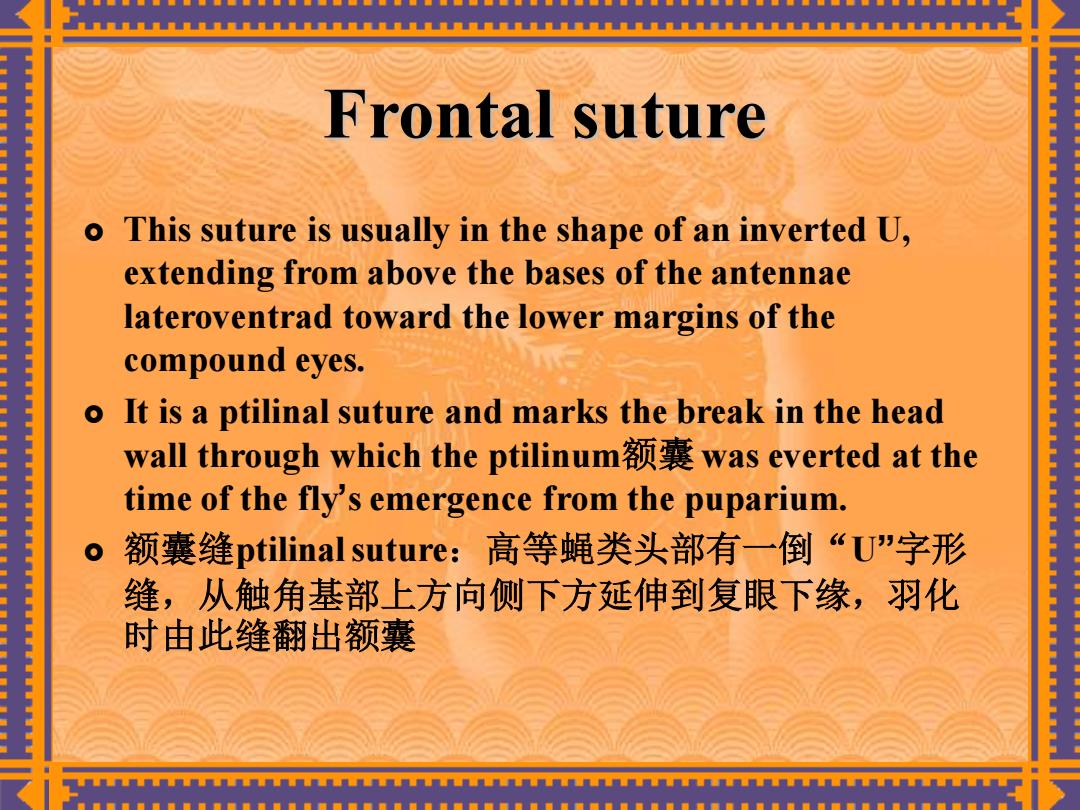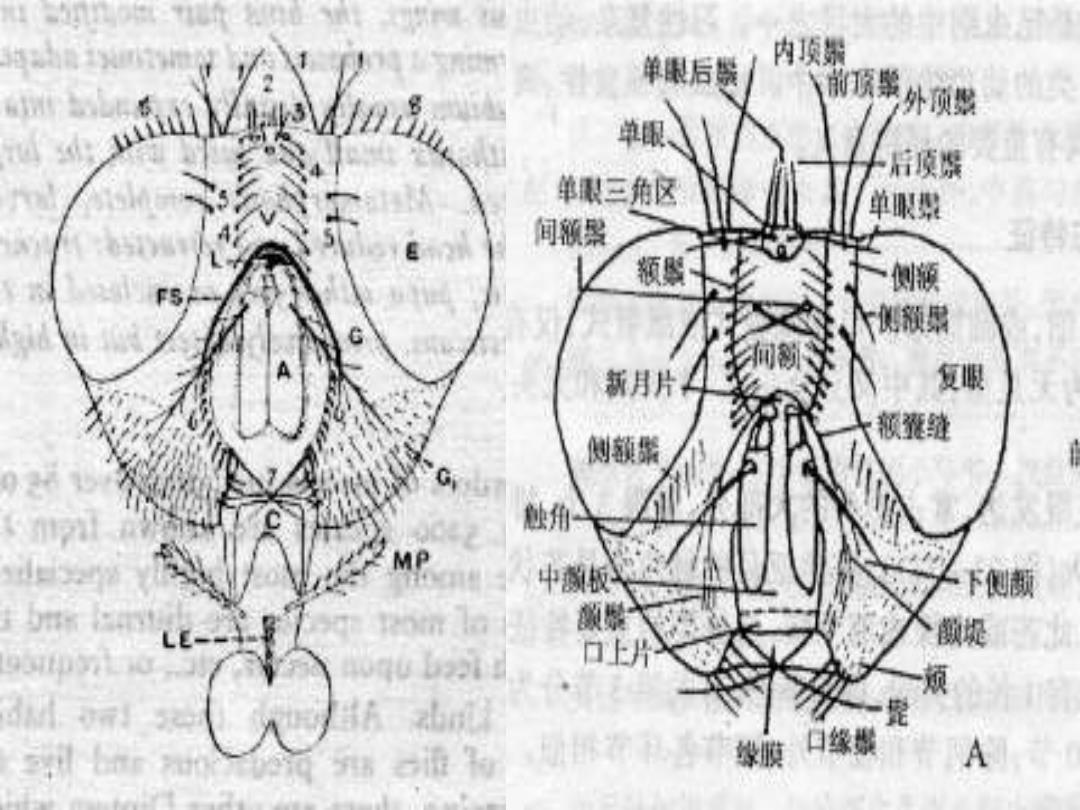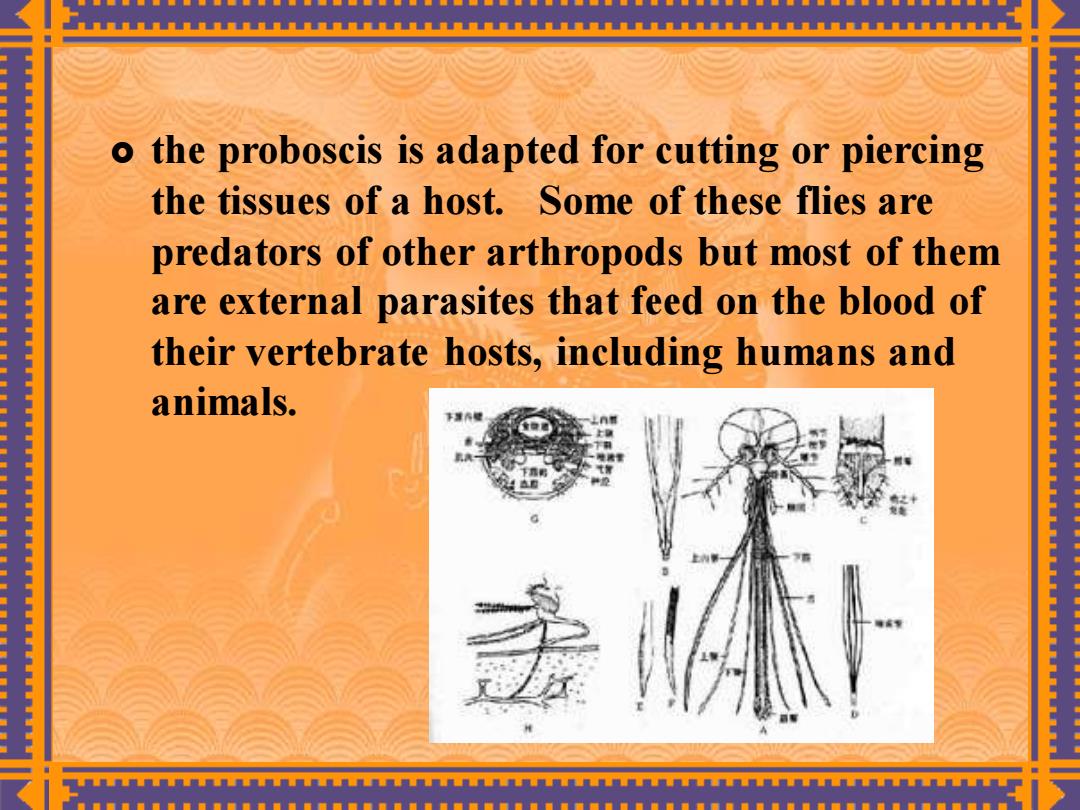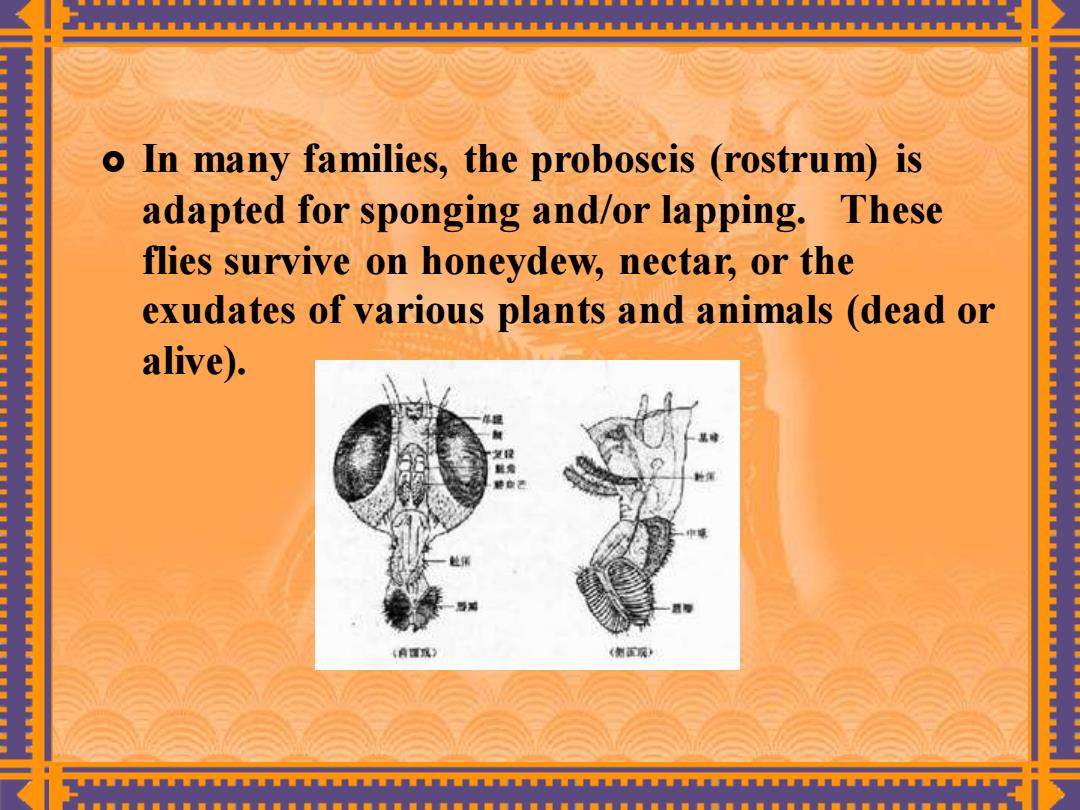
Frontal suture o This suture is usually in the shape of an inverted U, extending from above the bases of the antennae lateroventrad toward the lower margins of the compound eyes. 0 It is a ptilinal suture and marks the break in the head wall through which the ptilinum was everted at the time of the fly's emergence from the puparium. 0 额囊缝ptilinal suture:高等蝇类头部有一倒“U字形 缝,从触角基部上方向侧下方延伸到复眼下缘,羽化 时由此缝翻出额囊 里ULLLLLLUUUULLLLUUULLLUULLLLLUULLLLL
Frontal suture This suture is usually in the shape of an inverted U, extending from above the bases of the antennae lateroventrad toward the lower margins of the compound eyes. It is a ptilinal suture and marks the break in the head wall through which the ptilinum额囊 was everted at the time of the fly’s emergence from the puparium. 额囊缝ptilinal suture:高等蝇类头部有一倒“U”字形 缝,从触角基部上方向侧下方延伸到复眼下缘,羽化 时由此缝翻出额囊

单眼后紧 内项鳏 单眼 后顶 单银三角区 单眼累 间额累 额 侧额鼎 新月片 侧额鬃 触角 中颜板 下侧颜 口上片 缘膜 日缘

Fronal lunule o Between the apex of the U and the bases of the antennae is a small crescent-shaped sclerite 新月片frontal lunule:在额囊缝的项部与 触角基部之间有一新月形骨片 ULLULLULULLUUULLLLLLLUUULLLLLUUULLLLLUUULLLLULLLLLUULLLLUL
Fronal lunule Between the apex of the U and the bases of the antennae is a small crescent-shaped sclerite 新月片frontal lunule:在额囊缝的顶部与 触角基部之间有一新月形骨片

the proboscis is adapted for cutting or piercing the tissues of a host.Some of these flies are predators of other arthropods but most of them are external parasites that feed on the blood of their vertebrate hosts,including humans and animals
the proboscis is adapted for cutting or piercing the tissues of a host. Some of these flies are predators of other arthropods but most of them are external parasites that feed on the blood of their vertebrate hosts, including humans and animals

o In many families,the proboscis(rostrum)is adapted for sponging and/or lapping.These flies survive on honeydew,nectar,or the exudates of various plants and animals (dead or alive). A%) ULLULLULULLUUULLLLLLLUULLLLLLUUULLLLUULLLLULLLLUULLLLUL
In many families, the proboscis (rostrum) is adapted for sponging and/or lapping. These flies survive on honeydew, nectar, or the exudates of various plants and animals (dead or alive)